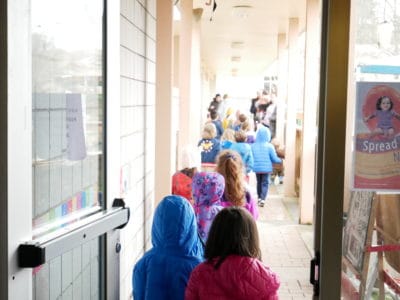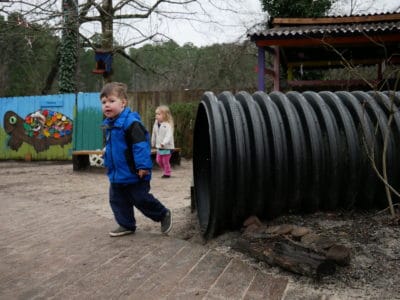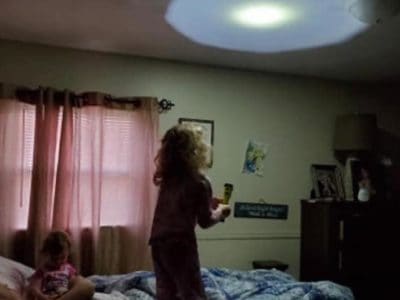
NC Pre-K is serving the same percentage of the state’s 4-year-olds that it was 10 years ago, and the program no longer receives the highest quality rating in an annual study of the nation’s state-funded preschool programs. As North Carolina grapples with the COVID-19 crisis and young children face what will be at least a six-month gap in their schooling, questions arise for what will be needed for NC Pre-K in 2020-21 to address what some researchers are calling the COVID slide.
North Carolina’s state preschool program – NC Pre-K – has traditionally been among the highest-quality programs in the country, winning top marks several years running for meeting all 10 quality measures on the National Institute for Early Education Research’s annual State of Preschool Yearbook. North Carolina has typically fallen in the middle of the pack, however, for access – the percent of 3- and 4-year-olds enrolled in the program.
Quality
The 2019 State of Preschool Yearbook, released recently, finds North Carolina meeting only eight of the 10 (revised) quality standards. The gap is in training and requirements for assistant teachers.
- NIEER’s quality standard is a Child Development Associate (CDA) degree or equivalent, while NC Pre-K requires assistant teachers to hold a high school degree and be working toward a credential like a CDA.
- NIEER also looks for all teachers and assistants to receive at least 15 hours of professional development per year. While NC Pre-K meets that benchmark for teachers, the program requires assistant teachers to receive only 5 hours of professional development per year.
North Carolina is one of 19 states that meet between eight and 10 of the quality benchmarks. Four states meet all 10, and another seven meet nine of them. NC Pre-K meets the quality standards for:
- Having comprehensive, aligned, supported, culturally sensitive early learning and development standards
- Having an approval process and supports for curriculum development
- Requiring teachers to have a BA (and a B-K license in NC)
- Requiring teachers to have specialized training in early childhood education or child development
- Limiting class sizes to 20 or lower (18 in NC)
- Keeping staff-to-child ratios at 1:10 or lower (1:9 in NC)
- Providing vision, hearing and health screenings, and referrals
- Having in place a continuous quality improvement system based on structured classroom observations and using data for program improvement
Sign up for Early Bird, our newsletter on all things early childhood.
Access
North Carolina ranked 27th in the nation in the percent of 4-year-olds served by the state preschool program (24% or just under 30,000 children). The national average is 34%. Thirty-two states also serve some three-year-olds in their state preschool programs (6% of 3-year-olds is the national average). NC Pre-K does not serve 3-year-olds. NC Pre-K’s reach has been more or less consistent since 2008 (see graph).

NC Pre-K is only one of several state- and federally-funded preschool programs in North Carolina. Head Start and NC’s Preschool Exceptional Children program bring the totals served up to about 11,000 3-year-olds (8.7% of NC three-year-olds) and just over 38,000 4-year-olds (31% of NC 4-year-olds).
In 2018-19, North Carolina provided 1,124 additional NC Pre-K slots, for an increase of 0.6% of 4-year-olds served by the program.
Investment: Local, state, and federal
State investment per NC Pre-K child (including TANF) in 2018-19 was $5,450, down $172 from 2017-2018, adjusted for inflation. This puts North Carolina 20th in the nation. However, this only tells part of the story in North Carolina.
Because of the NC Pre-K program’s financing structure – where state funds pay about half of each slot and local matching funds are required – North Carolina’s rank jumps to 9th in the nation ($9,162) when all funding per child (including local funding) is reported. This financing structure leverages additional local funds to support a high-quality preschool program, but it can lead to place-based inequities in access, as individual cities and counties decide how much to invest in the program locally.
State funding for the program per child has declined in the years since 2002 (see graph), while some local governments have prioritized growing the reach of preschool in their counties and cities.

NC Pre-K administration
North Carolina’s administration of the public preschool program is unusual among the states in that it is managed out of the Department of Health and Human Services (DHHS), rather than the Department of Public Instruction (DPI). The program was shifted out of DPI and into DHHS in 2011. The state’s other public preschool programs, such as Head Start, Title I Preschool, and Preschool Exceptional Children, are run out of DPI’s Office of Early Learning.
Nationwide, more than 80% of state preschool programs are administered at least partially by the State Education Agency, while only two others report being structured like North Carolina – where the preschool program reports only to the HHS agency.
Background on NC Pre-K
NC Pre-K enrolls at-risk 4-year-olds from low-income families who have not participated in other early childhood programs. NC Pre-K programs are required to operate 6.5 hours per day for 36 weeks each year and serve as many eligible children as funding levels permit. To be eligible, children generally must be in a household with income at or below 75% of the state median income (SMI); but up to 20% of children may be in a household with a higher income if they have another designated risk factor. Risk factors include a developmental delay or identified disability, a chronic health condition, or limited English proficiency.
Funding for NC Pre-K includes state general appropriations and North Carolina Education Lottery receipts, federal funds, and a local contribution. NC Pre-K classrooms operate statewide in settings such as privately licensed Head Start programs, childcare centers, and public schools. All programs, whether in public or private settings, must earn high-quality ratings under the state child-care licensing system to participate in NC Pre-K and the state’s subsidy system.
Impact of COVID-19 on North Carolina’s preschoolers
Research on crises like the one we are currently grappling with demonstrates that young children often bear the physical, emotional, and educational brunt when our systems are strained and the adults in children’s lives are stressed. COVID-19 is exacerbating inequities that already existed in our communities, including that some children are more likely to receive the benefits of remote learning than others.
Early educators are an important part of young children’s support systems, and when school starts back up in the fall, NC Pre-K classrooms will likely see the social-emotional impact of children having suddenly lost those connections back in March. Early educators will also see the impact of the trauma children are experiencing during this crisis, stemming from increased family stress as parents become unemployed and from lack of access to basic needs like nutrition as school feeding programs end during the summer. For North Carolina’s 4-year-olds, high quality curricula, well-trained teachers, low ratios, health screenings and referrals, and the other quality benchmarks noted by NIEER will become even more essential. In terms of access to the program, it remains to be seen how a recession caused by COVID-19 could impact state investment in preschool in 2020-21.
Editor’s note: This perspective was first published by the NC Early Childhood Foundation. It has been posted with the author’s permission.
Recommended reading



